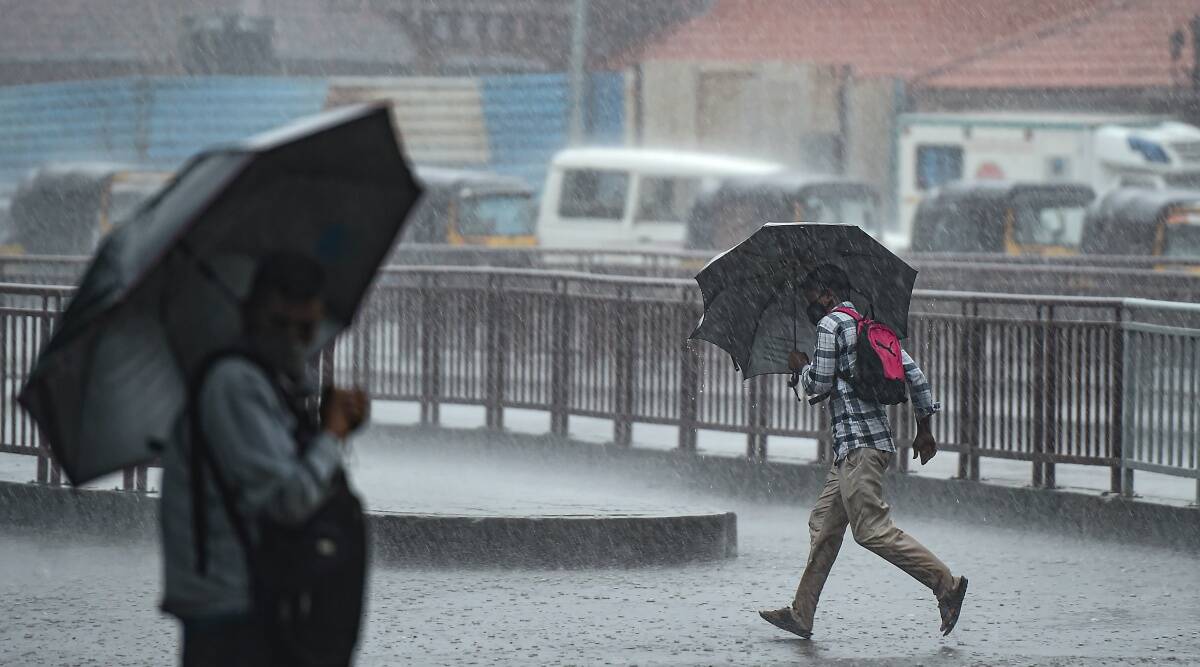 The monsoon is India's lifeline and a good monsoon essentially boosts the agrarian-driven economy. India has two kinds of monsoon -- the summer monsoon between June to September and the northeast monsoon during October and December. (File)
The monsoon is India's lifeline and a good monsoon essentially boosts the agrarian-driven economy. India has two kinds of monsoon -- the summer monsoon between June to September and the northeast monsoon during October and December. (File) For 8500 years now, varying intensities of monsoons over India have been affecting the marine population growing in the Arabian Sea, a new study has found.
Between 8500 and 6000 years Before Present, there prevailed strong summer monsoons, while the monsoon remained in its weak phase during the subsequent 4000 years, according to the study published in the journal Quaternary International.
The monsoon is India’s lifeline and a good monsoon essentially boosts the agrarian-driven economy. India has two kinds of monsoon — the summer monsoon between June to September and the northeast monsoon during October and December.
In this study, researchers from IIT Kharagpur, Wadia Institute of Himalayan Geology, Vellore Institute of Technology and Bharathidasan University tried to understand the response of some marine microorganisms to the changing pattern of monsoon, starting around 8500 years before 1950. The Arabian Sea experiences sea wind reversals during summer and winter seasons, most important being the summer monsoon wind circulation.
For the study, researchers studied oxygen and carbon isotope ratios of fossil shells, and calculated the organic carbon and calcium carbonate content of 100 sediment samples of foraminifera. These are single-celled microorganisms which grow on ocean beds and also float on the surface seawater.
The most dominant planktic species, including Globigerina bulloides, were also studied. They are sensitive to changes in marine environment, like temperature of sea water, pollution levels and others, but are capable of retaining the organic carbon. Paleo-climate and paleo-ceanographic variabilities are obtained from these shells over centuries and millennia time scales.
Scientists noted that during some years, planktons like Globigerina bulloides bloomed abundantly in the Arabian Sea. As opposed to some periods between 6000 years and 2000 years Before Present, their blooming was appreciably below normal. Senior geologist Anil K Gupta from IIT-Kharagpur linked this behaviour to monsoon winds and their intensities.
He said, “When the monsoon is strong, the associated monsoonal winds are also strong, leading to significant churning of surface ocean waters. In turn, it results in nutrient-rich, cold water from the thermocline layer reaching the upper ocean levels. Thus planktons like Globigerina bulloides bloom and their population increases — a direct response to arrival of nutrients to the surface.”
“We thus linked strong monsoon winds to a rich plankton population,” he added.
Further, even if there is higher food production on the ocean surface, it ultimately settles to the ocean bed, thereby benefiting even those marine zoobenthos which grow on the ocean bed, Gupta added.
“Since the life span of these organisms is limited between a few days to weeks, the nutrient signals are well captured by them and preserved even after they die out and leave fossil shells behind,” he said.
The situation was starkly different when monsoon winds were weak, Gupta said. “The presence of planktons was almost insignificant due to lack of nutrients for their growth,” he said.
- The Indian Express website has been rated GREEN for its credibility and trustworthiness by Newsguard, a global service that rates news sources for their journalistic standards.

